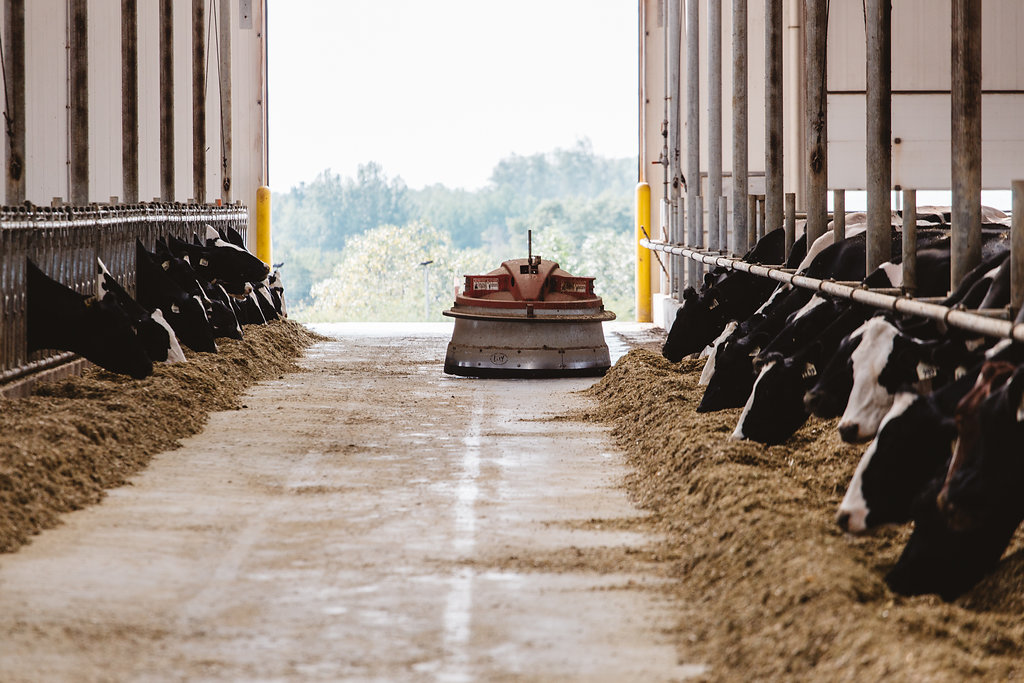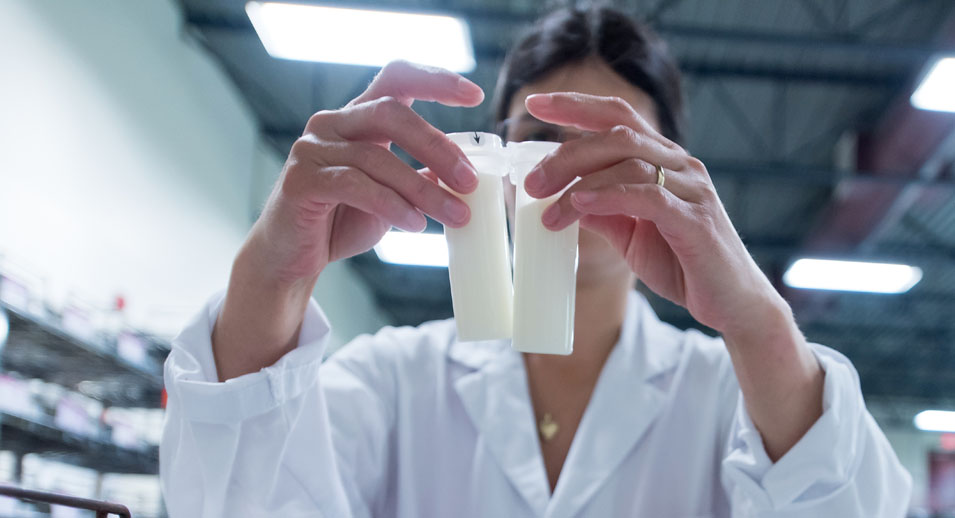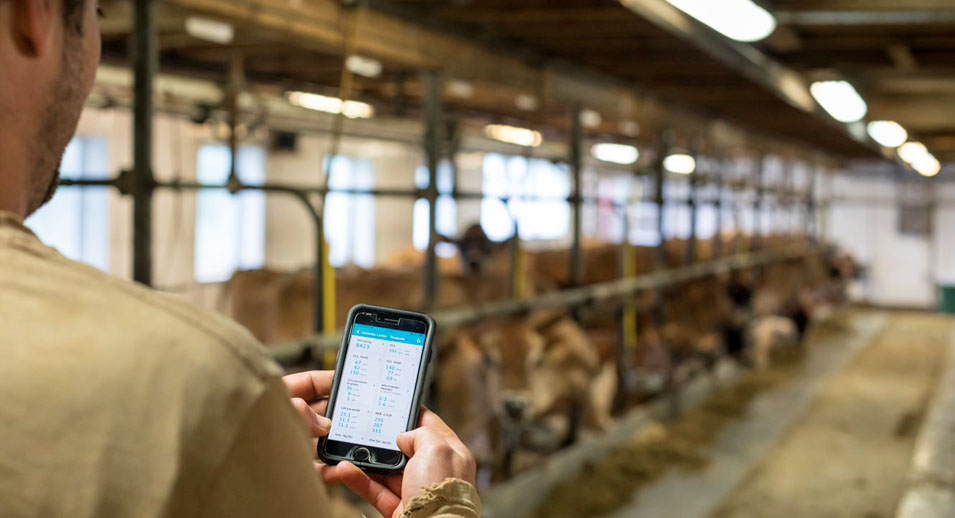How to Achieve a Successful Transition Period and Be More Profitable?
- 8 June 2022
Good management of the transition and dry-off period is critical to ensure a good start to lactation. It helps to optimize productivity, welfare, and the health of cows throughout the lactation. This critical period does not only include calving preparation: it begins before the end of the previous lactation and extends up to three weeks after calving! It should not be underestimated.
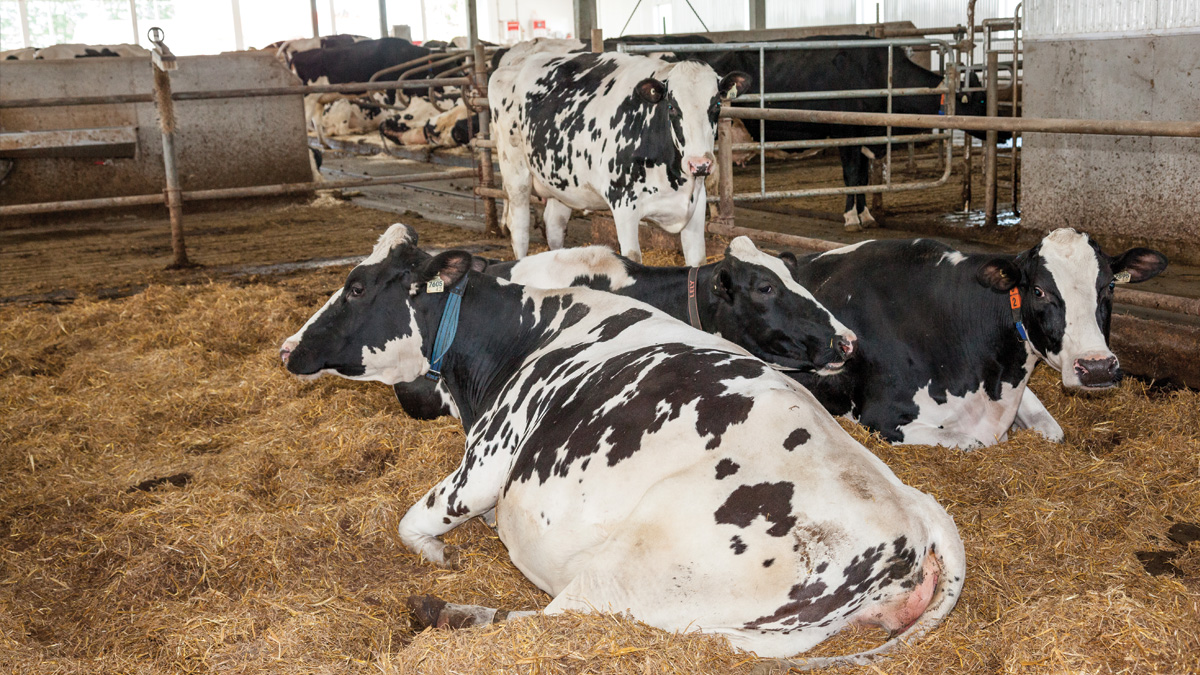
The Effects of a Difficult Transition
Without optimal management of the transition, several metabolic diseases can occur after calving (ketosis, milk fever, mastitis, etc.). It can also lead to a decrease in productivity that can influence the whole lactation, as well as subsequent lactations. A case of mastitis always leads to economic losses, with losses of $662 per case (Aghamohammadi et al., 2018) related among other things to veterinary costs, milk losses and extra labour.
Dry-Off: An Important Step
Drying off a cow is particularly important during the transition period. Especially for udder health, a good dry-off prevents the development of new udder infections and can help heal existing ones. Let’s talk about these dry–off techniques that can improve udder health and milk quality!
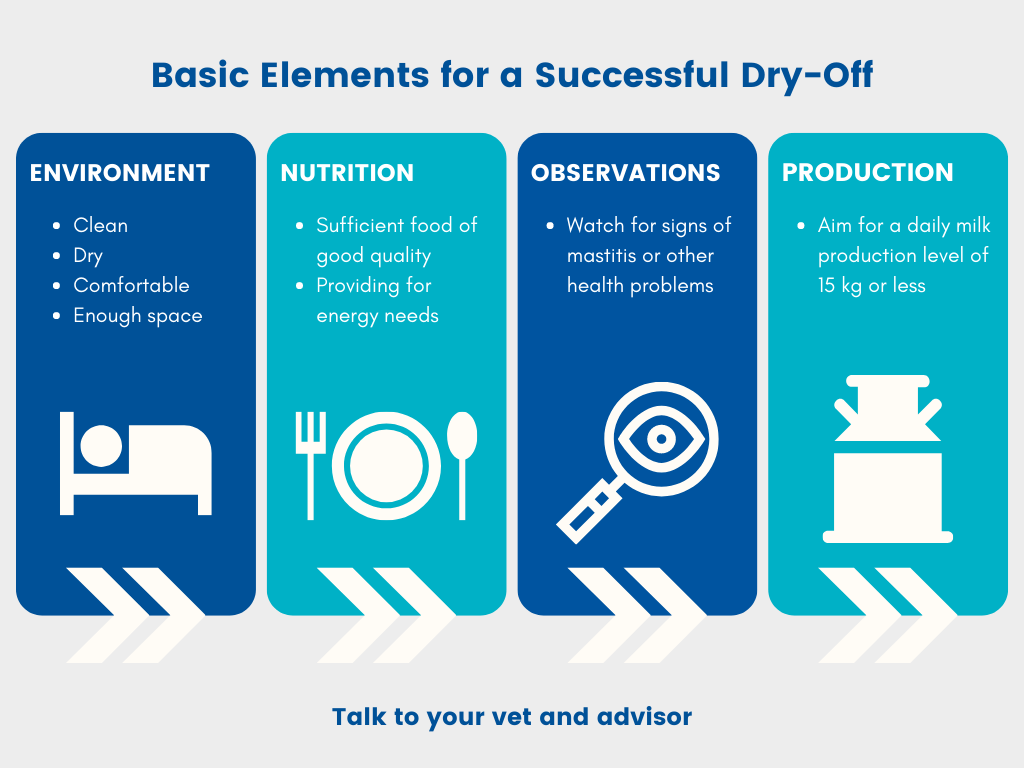
The Key to Success: Following an Effective Dry-Off Protocol
Cows with high production at the end of lactation can be more difficult to dry off. In addition, they are more likely to develop mastitis during their dry period because of the pressure on the mammary gland causing milk leakage. It is widely recommended to dry off your cows when they reach a production of less than 15 kg/day. To reach this level of production, there are several ways to reduce production without negatively affecting cow welfare or comfort.
Several studies have shown that reducing the energy in the ration available to cows, as well as reducing the frequency of milking, can be effective practices to reduce milk production before drying-off:
- Reduce the amount of concentrate offered to cows;
- Change from high-protein, high-energy forages to lower-energy forages without reducing the amount of forage available. We don’t want to cause a hunger situation.
Are Recommendations Different for Robotic Herds?
In cows with individual feeding systems, or in robotic milking, you may also want to consider reducing the number of concentrates in the feed tables for cows before the dry-off. Doing this gradually is a good idea, starting as early as two weeks before the expected dry-off. In a study that was looking at this in robot herds (France et al., 2022), the following combination of practices greatly reduced milk production compared to cows with no change in concentrates and milking frequency:
- Reduce the quantity of concentrates by 75% of their initial served quantity;
- Reduce milking frequency to twice a day for one week, then once a day for a second week just before drying off.
It goes without saying that any change applied to dry-off management may take time and adjustments.
Talk to your advisor, as each farm is unique and will require an approach tailored to your situation!



